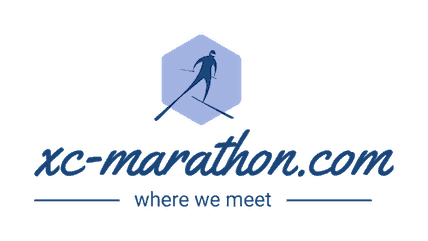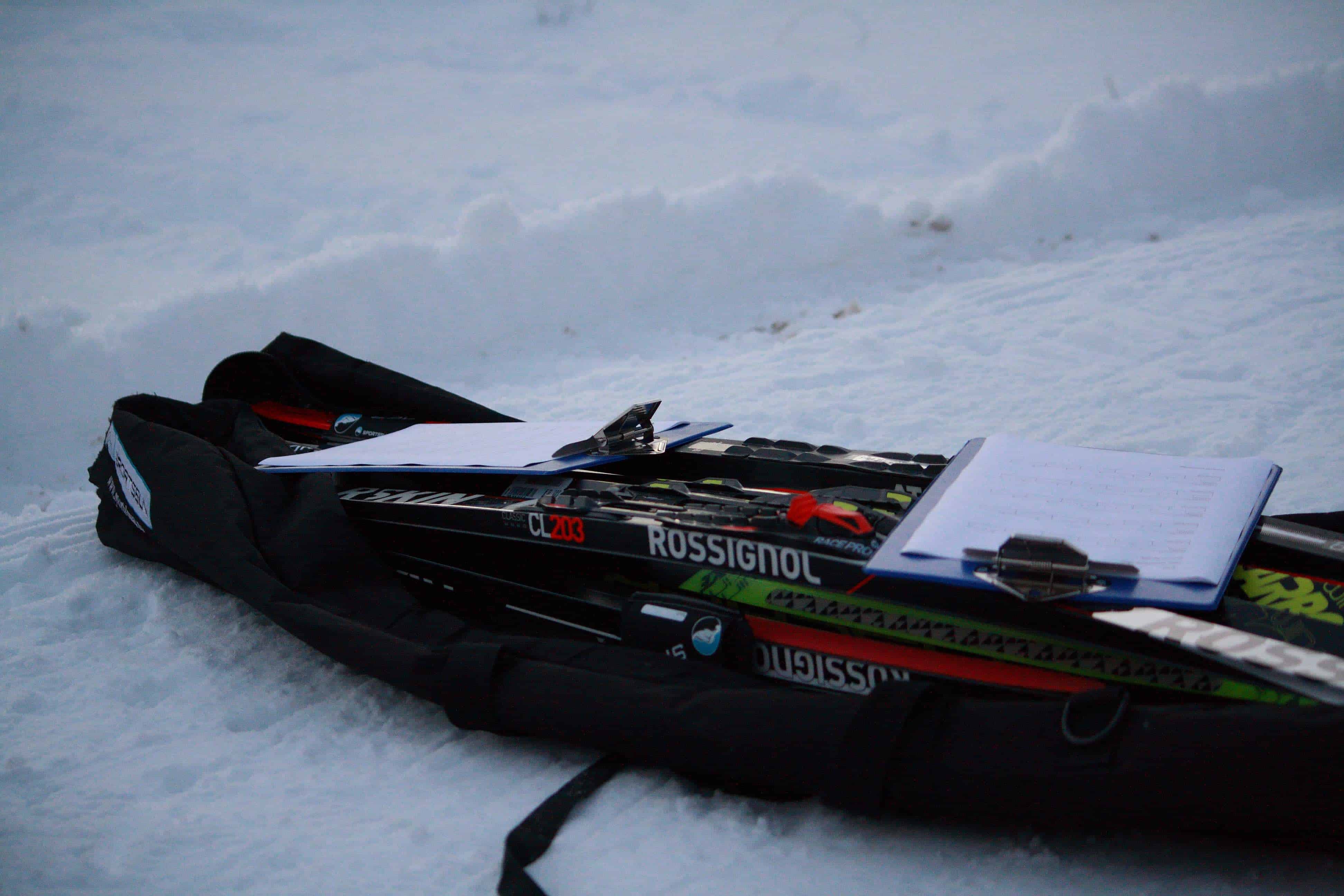In this series we want to try to eliminate all the knowledge gaps about ski waxing that makes many xc-skiers struggle. ski waxing is largely experience-based and many times we can be surprised by the conditions. But don’t worry. Take a deep breath. Smile! Swix experts Henrik Johnsen and Harald Bjerke will help XC-marathon´s readers throughout the winter!
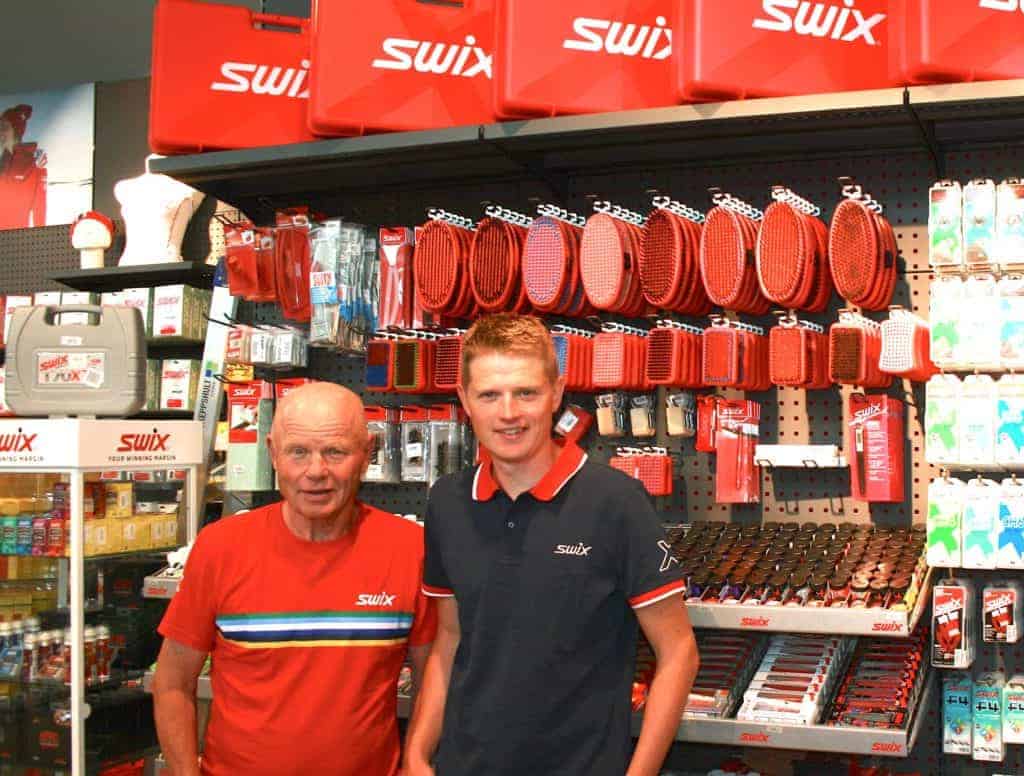
On behalf of our readers the happy amateur (and XC-marathon´s editor) Steffen Larssen will, in a series of 8 parts ask all the questions you either didn´t have the guts to ask – or didn’t know you should or could – about ski waxing.
Swix´ best men
XC-marathon has invited ourself, and has been warmly received, by racing chief Henrik Johnsen and one of Swix ´ most prominent figures, Harald Bjerke. We meet a blue summer’s day in July at their headquarters in the Blåswix road -2- -7 (true!) in Lillehammer, just besides the highway. Henrik is the racing director and has worked in Swix for 7 years. He is responsible for cross-country racing services, within cross country, biathlon and xc-marathon in Norway, as well as sponsor follow-up among Norwegian pro skiers. Harald is now retired, but previously worked as a product manager in Swix from 1972 to 2013. Today he is a product manager assistant, and ‘ museum director ‘ for the Swix museum. He has been developing Swix blue extra, Cera F and Cera Nova, among other things. If you read norwegian author Thor Gotaas´ brick of a book (norwegian), Birken, Harald is also duly noted there. What these two do not know about ski waxing is not worth knowing.
Swix was immediately accommodating and interested in the idea for this series of articles when XC-marathon.com made contact, and Henrik and Harald continued a warm and pleasant tone when I arrived. We make a beeline straight into the meeting room for coffee and lunch, and a long talk about my mission.
This also means that you may be somewhat hesitant about acquiring too many ski pairs, Henrik concludes: -I believe that you can really be happy with one or two pairs in the beginning; one pair of cold, medium structure sole, and one for zero degrees with a medium structure and prepared with manual structure tool as needed.
Henrik Johnsen, racing chief Swix.
I explain the purpose of my trip to Lillehammer, and in doing so, we are starting.
Swix and turrenn.net have after an initial dialogue ended up with a series of 8 articles where we together try to uncover the loopholes and trip wires on the journey towards the best possible glide and grip. We’ve been trying to find the most important lessons that separate the pros and the amateurs – affecting the result of your waxing efforts, and thus also the ski experience.
Here’s the result, we hope it you find it worth spending some time:
Sign up for english newsletter here and recive new articles and news as they are fresh!
Part 1:-Make it easy
Learn to know precisely your own ski pairs as well as possible.
Harald and Henrik are quickly emphasizing that they think too many skiers are doing things too complicated:
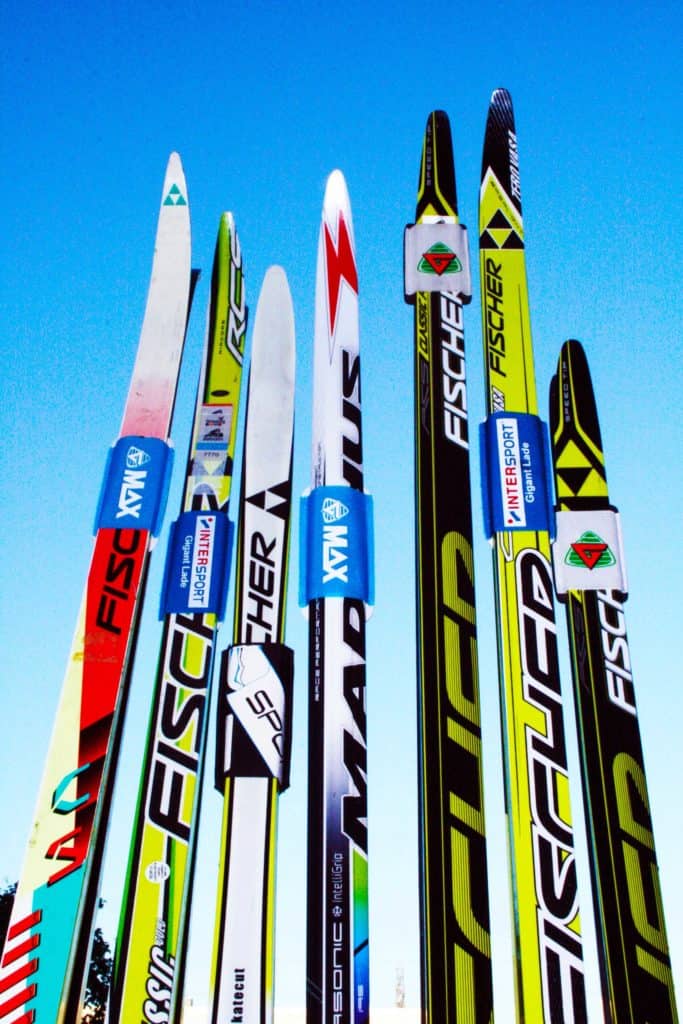
-In the weeks and months before the marathons it is most important that you try, and check out, wax and waxing options (thick / thin, long / short waxing area) on your own skis. This is how you best learn to get to know both your skis and the waxing they need. Remember that it is not that the two skis that make your pair are exactly the same from the factory; Neither the skis that make up the pair you have, or your pair compared with other pairs from the same series, will be exactly similar, Henrik and Harald explains initially. Therefore, it is so important that you find out as most as possible about exactly your pair of skis, they continue. – The goal when it comes to our products should be to learn the few variations (Blue, Blue Extra, Purple) you most often need to use, and what they stand for, on just your skis.
But experiences from each training session and every ski can be difficult to remember, we interrupt:-How about some sort of waxing diary/notebook; Is it wise, or is it too complicated? What you should you in this event put down or be particularly aware of while testing the waxes on your skis, beyond noting sippery skis (too little grip) or snow lumps attaching to the skis?
Swix:-The most important factors that affect the result are: temperature, snow type (fresh snow or old reshaped), humidity, length of the skiing session, ski pair, structure, length of grip zone, grip wax and number of layers, glider wax, and wear and tear of the wax (all these things will this series of articles eventually get closer into; ed. note.). You may not want to take the time to record all these factors every time, but the temperature at which you have been, the snow type and humidity, and possibly the wear and tear of the wax are the most important ones, answer Henrik and Harald.
Test how much wax the skis can ´manage´.
-even when exercising, you should make the most of the waxing as you’d like to do for a race, Henrik and Harald continue. -and what is particularly important then is to test how much the skis can manage (amount of wax/number of layers) for the various ski pairs. The best thing you can do is try and try again. This is because on long races or training sessions a lot of wax is needed, and the tension in the skis provides “room” for a certain amount of wax. The best thing is to take advantage of this room as much as possible, but not too much. Then the skis and the snow create friction or drag.
The skis ‘drag’ and you gets bad gliding properties if there is too much grip wax. Use the ‘ pyramid technique; Add progressively shorter layers of wax on top of each other (measured from the back to the front point where you apply the wax; i.e. the so-called wax-pocket that is most often measured and marked off in the store; see the next section). And remember that each layer must be rubbed with a block (can be bought in stores) or similar. Some skis manage 6-8 layers of the ‘ cold ‘ waxes (i.e. for ´cold´ conditions = below zero degrees) violet, blue, green. If you use softer waxes ( waxes for warmer temperatures than zero degrees is softer than the ones for for colder temperatures and are therefore termed ´softer´) as red or yellow, add fewer layers.
It’s easy to understand that if you’ve put too little wax, you just put on a little more. But what do you do if you find that you’ve put too much wax and have 20 kilometers left back? Many will then think that the training is wasted and will fear snow lumps under the skis. Can you easily remove a little surplus wax when you’re already out in the tracks? And is there a difference between the number of layers, and the thickness of the layers, for the different colors?
-You may want to stop and then scrape off the wax with a plastic scrape along the way and then rub with the before mentioned block. -In other words, our advice is to bring your scrape and block on the traiing session,” says Swix´ experts.
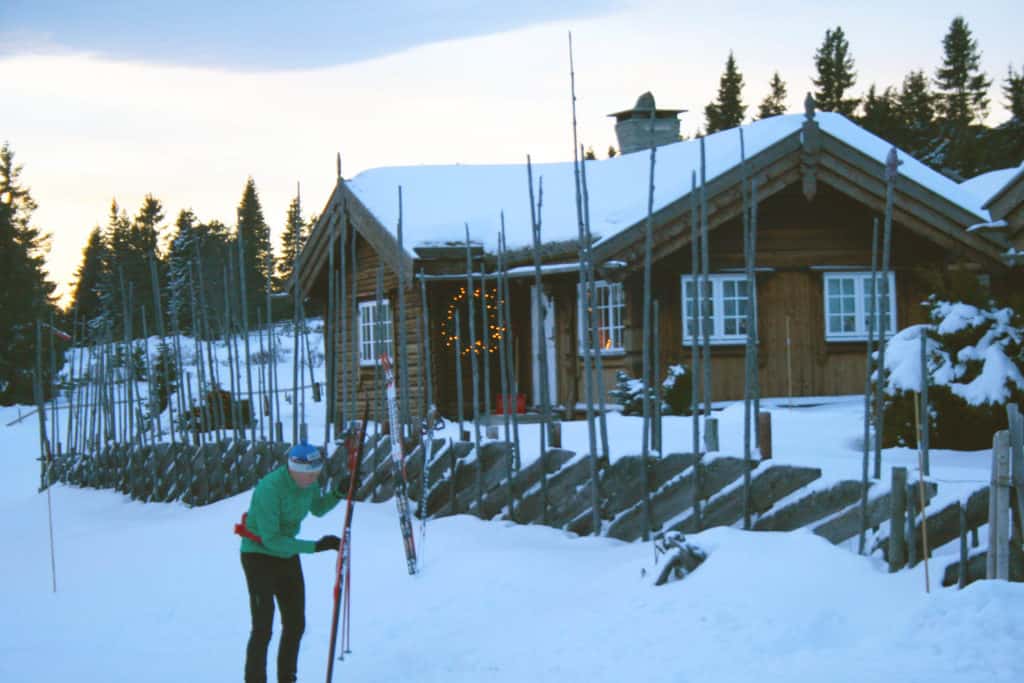
Purchase and/or measure your skis with a specialist
The third, and decisive tip we will give initially is perhaps the most important, emphasizes Henrik and Harald: It is to have measured up your skis – and then preferably buy at a store that specializes in cross country skiing. Then you are sure to get the right length and right tension with regards to your skills and your plans for using the skis (training, race, etc.). The skis can preferably be measured with “old fashioned” equipment in the shop, one does not need the latest big electronic machines that some stores has now. But of course, they represent an advantage because they can reveal differences between the two skis you have that make up your pair, says the two experts from Swix.
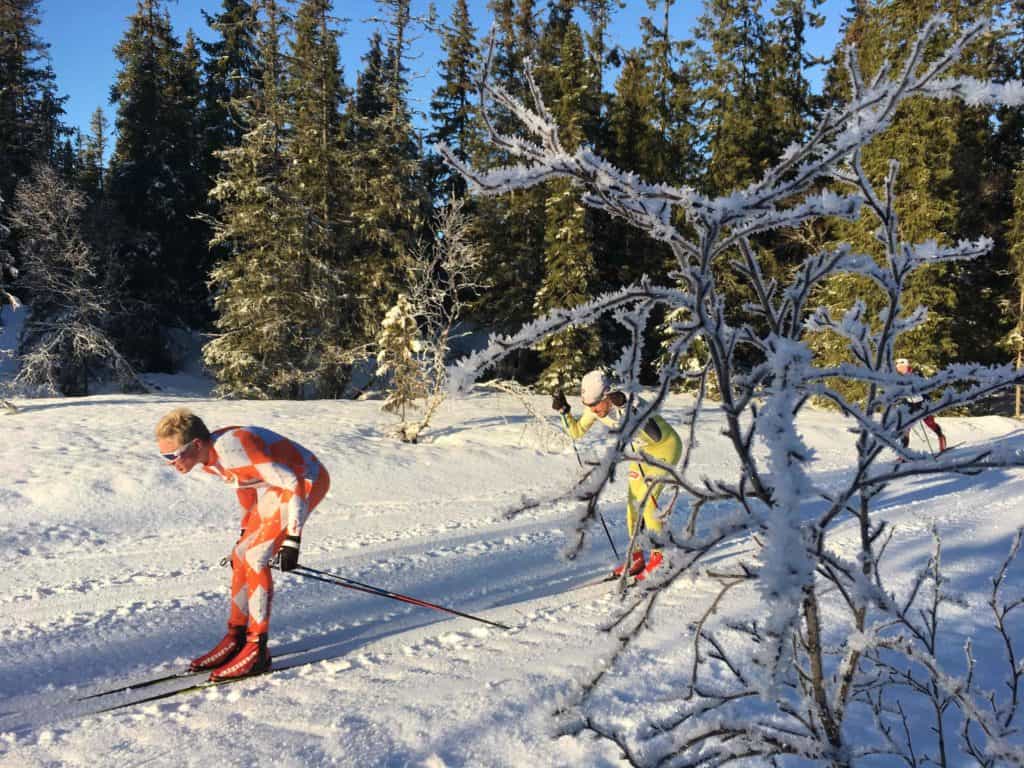
One or two, max three pairs are enough
This also means that you may be somewhat reticent about acquiring too many pairs, concludes Henrik: -I believe that you can really be happy with one or two pairs to begin with; One pair for the cold conditions with medium/fine structure, and a pair for zero degree conditions with medium structure that can be adapted as needed with manual structure tools (more on different structures in the sole and the reason why the skis otherwise are suitable for hot or cold conditions in later articles; editorial note); Then possibly Zeroski (special skis not to be waxed that grips extra good in new, humid snow at zero degrees). Alternatively a grease wax / warm wax ski pair for the warmest conditions (0 degrees and hotter) one could possibly add as a third pair, Henrik says.
temperature in the air or in the snow?
Finally, ,any people wonder about the temperature directions on the wax box: Is the temperature recommendations on the box referring to the snow or the temperature of the air?
Swix:-the box is referring to air temperature in the shade. Snow temperature can never be above 0 °c. The temperature of the box is a general guideline, one must also consider the humidity and snow consistency, Henrik and Harald rounds up for this session.
Summary
Briefly in summary, Swix ´ in this article has explained to us:
- Make waxing easy,
- Learn through experience and write down keywords from the training sessions,
- Measure your skis (tension) carefully, and
- …do not start with too many ski pairs!
